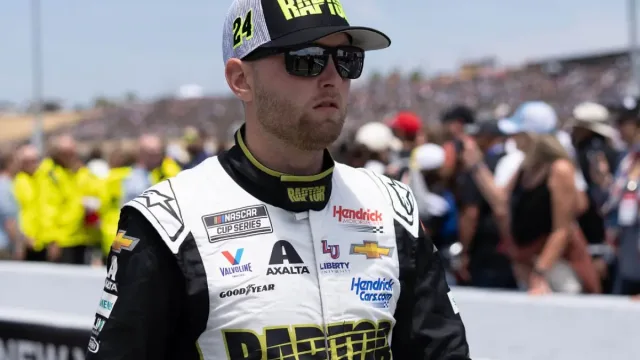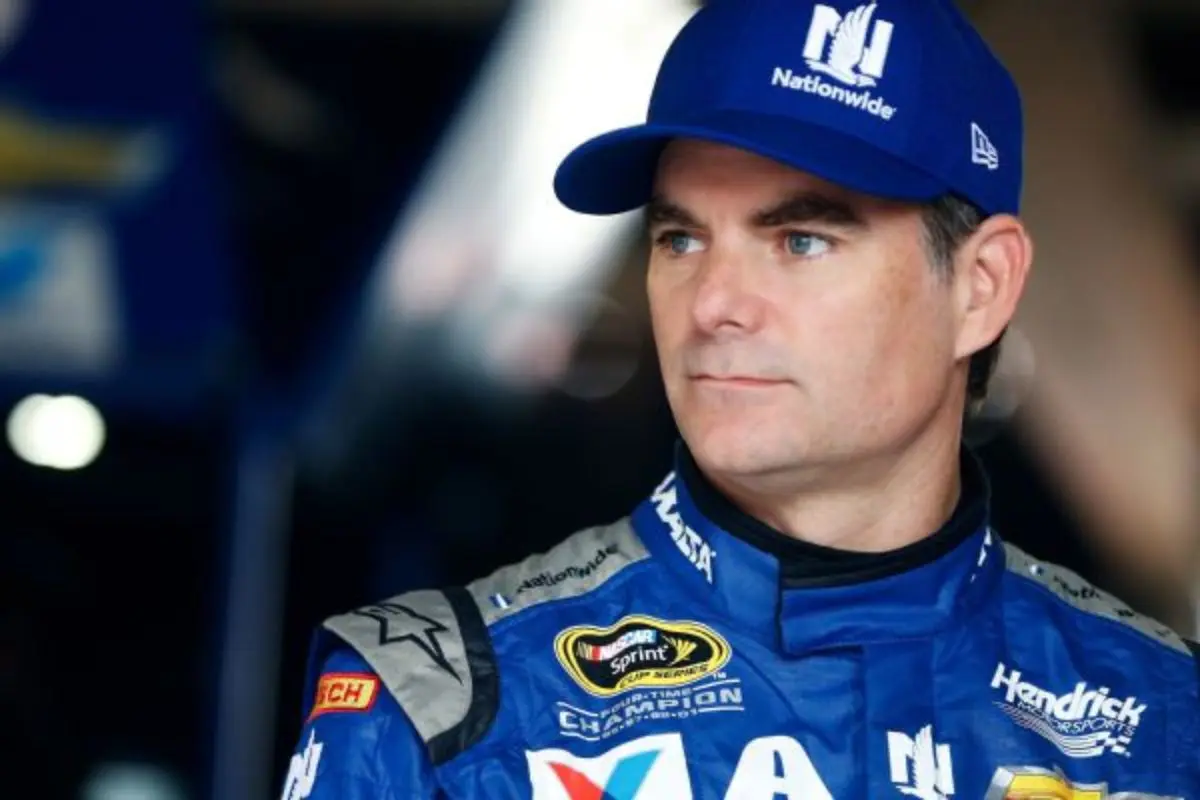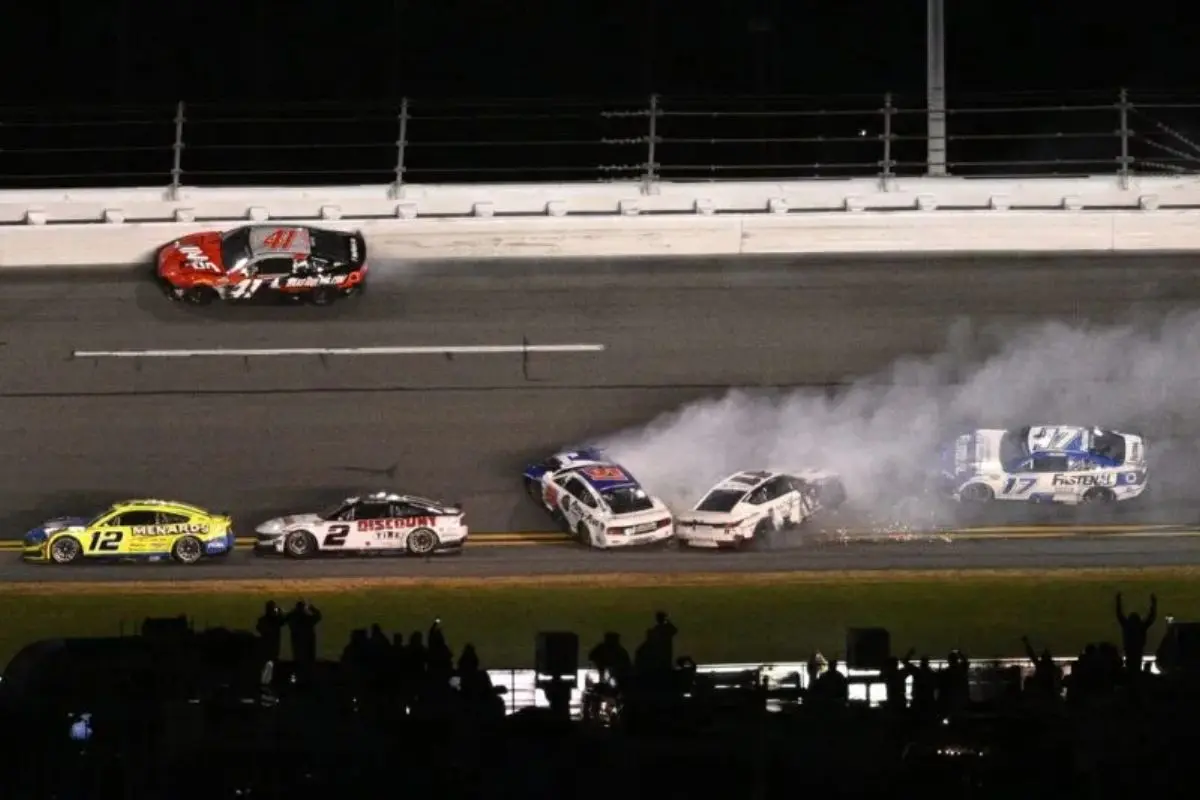William Byron breaks silence on cheating allegations after winning the 2025 Daytona 500, but doubts linger. Some say his team used a risky move to escape penalties. Others believe it was just a racing moment. His response? A simple explanation that left many questioning the truth. Meanwhile, Jeff Gordon shared his thoughts, adding another layer to the drama. NASCAR’s strict inspections and past controversies fuel the debate. Did Byron truly earn his victory, or is there more to the story?
Key Highlights
- Byron denied conspiracy theories, attributing wall contact to simple clumsiness rather than intentional strategy.
- He emphasized enjoying his victory despite external criticism and allegations of cheating.
- Byron’s victory highlighted his skill and composure under the intense pressure of the race.
- Critics alleged the use of a ‘crash-the-wall’ tactic to avoid NASCAR rule violations.
- Byron’s win at the Daytona 500 underscored the unpredictable nature of NASCAR racing.
Jeff Gordon’s Reaction and William Byron’s Daytona 500 Victory
In a race characterized by high-speed chaos and unexpected turns, William Byron’s victory at the 2025 Daytona 500 was nothing short of astonishing, capturing the attention of both fans and critics likewise.
The race unfolded with the typical unpredictability of Daytona, featuring multiple lead changes and intense competition. Jeff Gordon, a former NASCAR champion and team leader, expressed his surprise at Byron’s success, highlighting the race’s frenetic nature.
Gordon recalled the moment of confusion and surprise when Byron navigated through a late-race crash, emerging as a red blur that defied the chaotic scene.
“I didn’t even realize where William was because so much was happening, and when those two started crashing, I saw this red blur go through, and I was like, did he get through?” – Jeff Gordon
Byron’s ability to maneuver through the wreckage showcased his skill and composure under stress. This victory, marked by precise timing and tactical expertise, solidified Byron’s reputation as an adept driver.
His success emphasized the inherent unpredictability of NASCAR, where split-second decisions can drastically alter outcomes, leaving even seasoned observers like Gordon in awe.
Conspiracy Theories and William Byron’s Response
Surprisingly, the victory of William Byron at the 2025 Daytona 500 has been tainted by swirling conspiracy theories. Critics suggest that Byron’s team, Hendrick Motorsports, employed a controversial tactic, evoking the ‘crash-the-wall’ strategy, to circumvent a potential rule violation.
William Byron said he hasn't looked much on the social media discussion about his Daytona 500 win. But says as far as hitting wall on his burnout, he was just being clumsy. @NASCARONFOX pic.twitter.com/P7ZcJXwkQf
— Bob Pockrass (@bobpockrass) February 18, 2025
Such claims gained momentum following the disqualification of Parker Kligerman in the NASCAR Craftsman Truck Series for a rear ride height infraction. Byron’s light contact with the wall during his celebratory burnout fueled further speculation.
In response, Byron decisively dismissed these conspiracy theories, asserting his innocence with a simple retort: “I’m just really clumsy.”
“Yeah, I haven’t looked at any of it… conspiracies that I hit the wall on purpose on my burnout. I’m just really clumsy.”
“Honestly, no, I haven’t looked at any social media. I feel like that’s the best way to go about things sometimes.” – William Byron
Insisting on his genuine intentions, Byron explained he has deliberately avoided social media to escape the speculative whirlwind. He emphasized the importance of savoring victories, regardless of external noise, noting, “You gotta enjoy every win, no matter how they happened.”
History of Burnout Damage in NASCAR
Burnout celebrations in NASCAR, while exhilarating for fans, have a controversial history filled with calculated implications. This practice, often seen as a victorious display, has occasionally been employed to conceal potential rule violations.
Importantly, concerns over burnout damage have surfaced when suspicious post-race incidents appeared to mask infractions, such as ride height violations.
In 2011, a notable example emerged when Chad Knaus, crew chief for Jimmie Johnson, was recorded advising Johnson to damage the car’s rear to potentially avoid inspection issues. This incident highlighted the tactical manipulation of burnouts.
Likewise, driver Landon Cassill openly admitted to deliberately damaging his car post-race, acknowledging the calculated intent to evade detection of a ride-height infraction.
These instances emphasize the dual nature of burnouts as both celebratory gestures and potential tools for circumventing NASCAR regulations, illustrating the complex interplay between competition and adherence.
NASCAR’s Post-Race Inspection Process
Although NASCAR is known for its thrilling races, the post-race inspection process plays a crucial role in maintaining the integrity of the sport. Each race concludes with a detailed examination of the winning car and a select few chosen at random, ensuring adherence to the strict rulebook. This rigorous teardown involves evaluating parameters such as ride height, aerodynamics, and engine legality, which are critical in preserving fair competition.
The focus on ride height is particularly important. NASCAR enforces precise minimum and maximum limits, as this measurement directly influences aerodynamics and handling. A car with a lower ride height enjoys increased downforce, resulting in improved cornering speeds and overall performance.
However, cars must remain within legal thresholds post-race to avoid penalties or disqualification, as evidenced in Kligerman’s case. Consequently, the inspection process serves as a crucial mechanism in upholding the sport’s standards and fairness for all competitors.
Loopholes and NASCAR’s Efforts to Close Them
The intricacies of NASCAR’s rulebook present both challenges and opportunities for teams aiming for competitive advantages, as some have exploited existing loopholes to skirt regulations. Notable among these are tactics like body damage cover-ups, where post-race damage can obscure precise ride height measurements.
Teams have also manipulated tire tensions to adjust ride height temporarily, a practice now heavily regulated by NASCAR. Other strategies include using loose parts, which can detach during race celebrations, making it difficult for officials to confirm a car’s legality. Intentional contact during final laps has also been orchestrated to cause minor damage, potentially affecting inspections.
Despite these cunning strategies, NASCAR has made considerable strides in closing loopholes. The organization has improved its inspection process with advanced technology, including laser scanning systems, and implemented stricter post-race policies.
News in Brief: William Byron Breaks Silence on Cheating Allegations
William Byron effectively addressed the cheating allegations and criticism following his Daytona 500 win, emphasizing transparency and integrity in racing. Jeff Gordon’s support highlighted Byron’s commitment to fair competition.
As conspiracy theories swirled, NASCAR’s inspection process and history of burnout damage came under scrutiny. Despite existing loopholes, NASCAR remains dedicated to ensuring fairness by closing gaps in regulations. Byron’s response and the organization’s efforts to uphold standards highlight the importance of trust and accountability in the sport.
ALSO READ: Jeff Gordon and Rick Hendrick’s Talk That Led to William Byron’s Daytona Win



